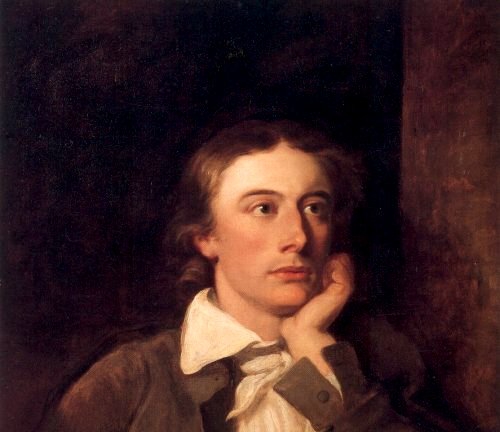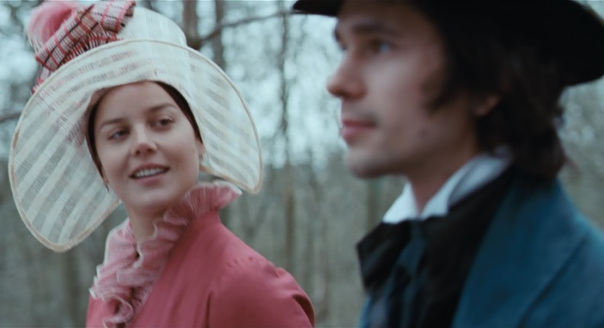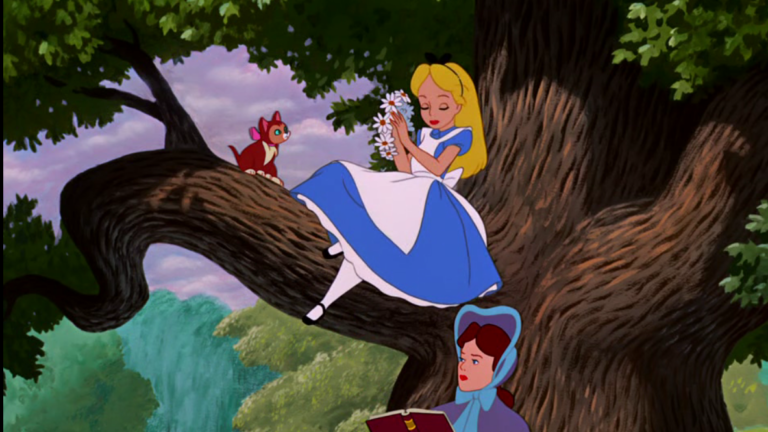Film Review: Steadfast as Thou Art

by Gailynne Bouret, First published for the May/June 2010 issue of Finery

The 2009 movie “Bright Star” depicts the doomed romance of poet John Keats and Fanny Brawne, the girl next door and the inspiration for some of his most memorable work. Director and writer Jane Campion and costume and set designer Janet Patterson treat us to a visually rich film that, like a finely crafted poem or beautifully constructed gown, is a work of art. By opening the film with a close up of needle and thread in the act of sewing, Campion underscores Fanny’s place in Keats’ biography and recognizes her as an equally creative individual.
Fanny’s costumes illustrate her transformation from a young girl obsessed with fashion to a poet’s muse. When we first see her she is sporting a large white Cavalier collar over a scarlet pink Spencer jacket. It is the dress of a young girl in the flower of her youth and conveys a sense of Fanny’s stylish and confident personality. Another extravagant touch is a triple ruffled stand-up collar that Fanny creates for a shimmering white ballgown. This is the ensemble of a social butterfly, complete with a white butterfly ornament in her hair. Fanny is at a ball, the milieu of most young women in early 19th c. Britain. She is proud of her unique collar and boasts of it to Keats.
This is one of many scenes where we see Fanny in white or pink: notably a pink smocked dress over which is a full-length, deep pink coat tied under the bust in a rosette bow. Her bonnet is constructed of an open-weaved sinamay that is trimmed with an elaborate series of plaid bows. In this outfit she is a sharp contrast to Keats in his blue coat and dark top hat as they walk through the woods of Hampstead Heath. White and its associations with purity and virginity is a predominant feature in both Fanny’s outfits as well as the scenery in which we find her: her bedroom is white, as is her bed and the gauzy curtain that envelopes her when she realizes her love for Keats.

Abbie Cornish as Fanny. Ben Whishaw as John Keats, Promotional photo, 2009.
Banished from him when he falls ill, Fanny stands outside the window of his sickroom clad in a white dress and gloves, holding a branch of blossoms as pink as the ribbon beneath her breast. She is a harbinger of spring as well as an angelic muse.
However, as their relationship grows, Fanny’s wardrobe assumes deeper, richer colors, such as plum and deep blue. When she sits in a field of bluebells, reading a love letter from Keats, she blends into the scenery and becomes a part of the nature to which Keats addresses so much of his poetry. She wears a coat of blue wool trimmed in velvet as she reads another letter. It is similar in color to Keats’ clothing. As Keats tutors her in poetry and their relationship develops, Fanny forsakes the flourish of multi-ruffled collars and excessive trim. She is no longer the “minx” that Keats first meets, nor the social butterfly that his friend and patron Charles Brown believes her to be. Her wardrobe assumes darker tones such as the chestnut silk dress she wears the eve of Keats’ departure for Italy. Fanny’s final scenes find her in black as she dons mourning following Keats’ death.
It’s notable that throughout the film, costumes are matched to scenery and mood. The warm woods and simple furnishings of the Brawne family’s parlor denote a loving family of genteel poverty. Fanny’s mother wears the white cap common among married women and the bodice and skirts that were fashionable during her youth in the late 18th century. The rich tones of Brown’s mahogany study filled with books and leather chairs make his plaid-clad presence a mockery and underscores Brown’s swagger and bombast in thinking that he is as gifted a writer as Keats. In contrast, Keats’ monochromatic outfit of blue suggests the ethereal nature of a poet. Draped upon the thin frame of actor Ben Whishaw, the coat hangs worn and rumpled. It is especially effective in contrast to the dark suits of the men in his literary circle.
“Bright Star” is a slow and subdued film that captures the essence of the restrained relationship between Keats and Fanny. But it is a visual delight: each scene is as crafted as a painting, and much of that is owing to the synchronicity of costumes and sets.




Leave a comment